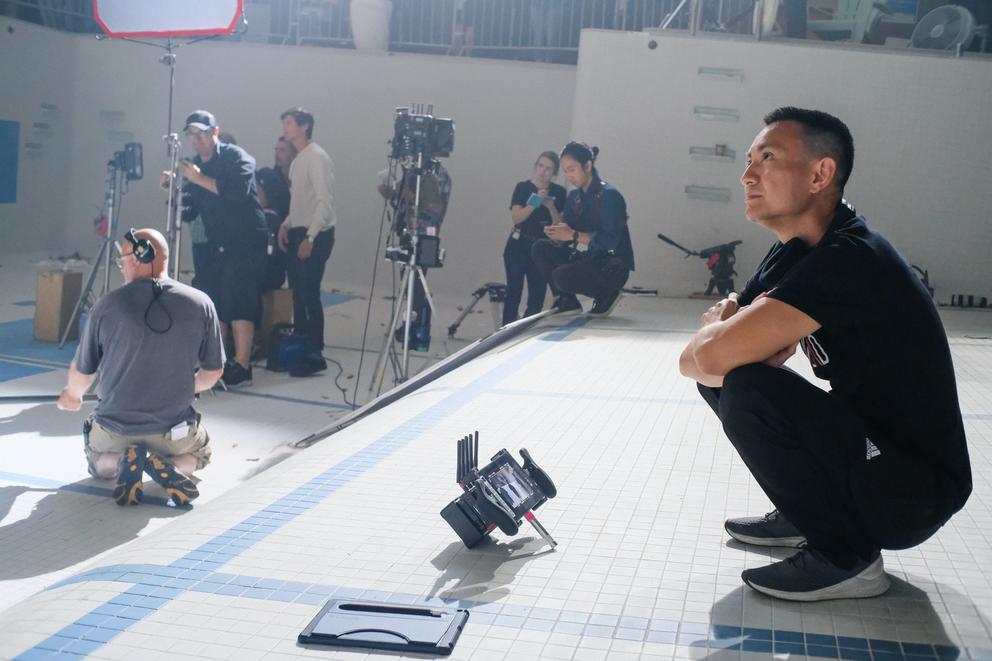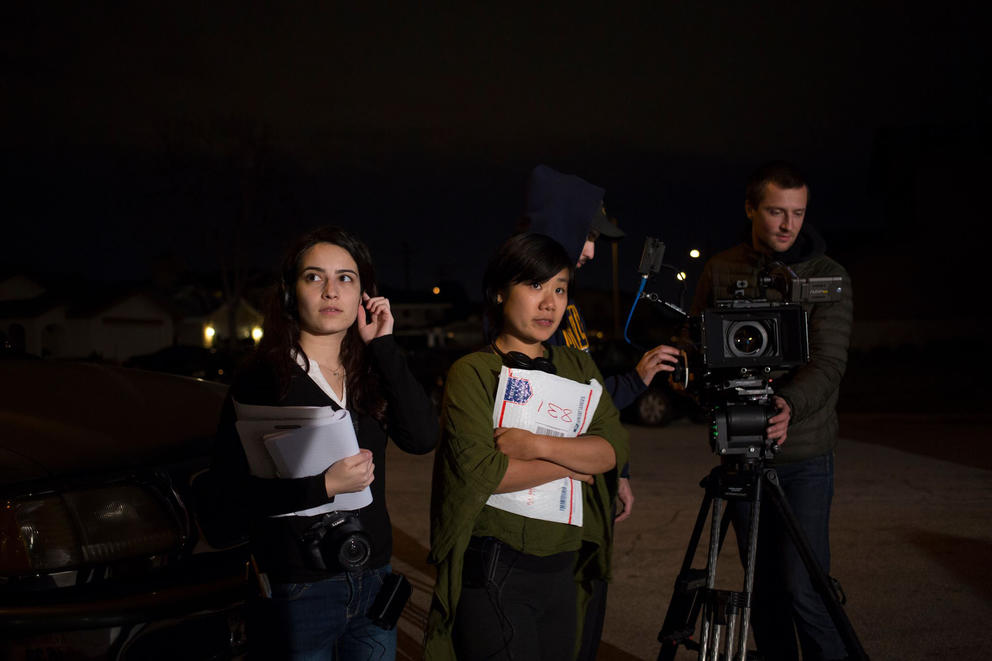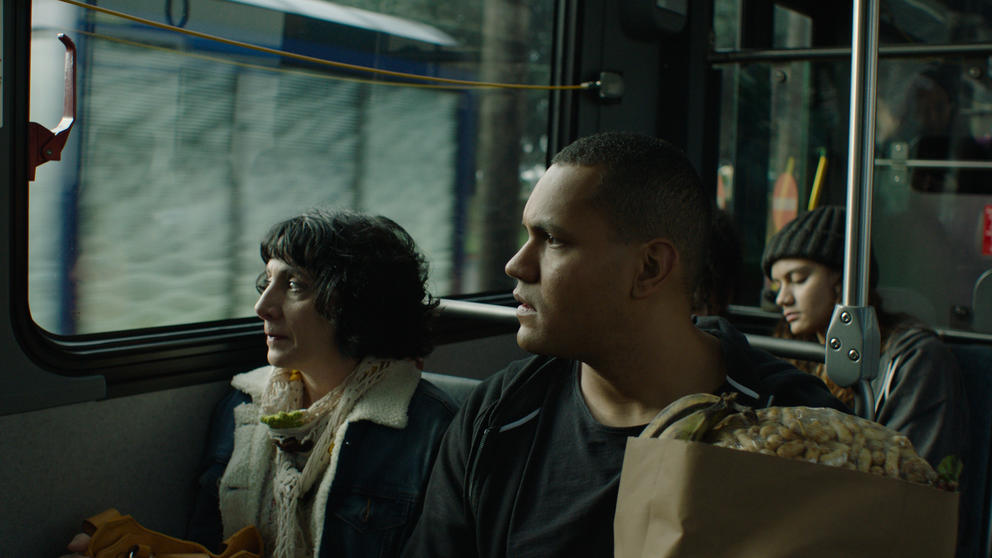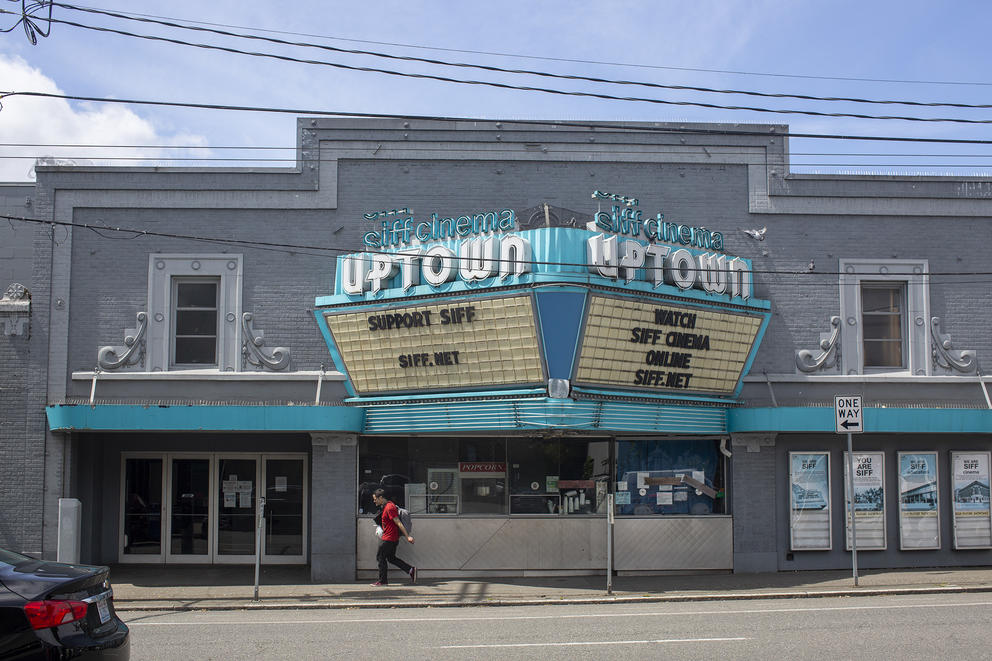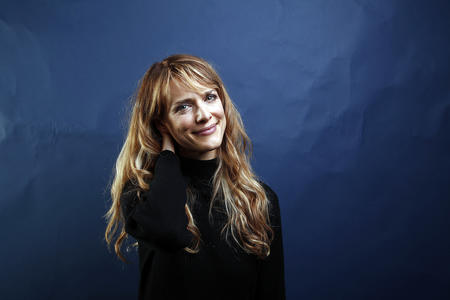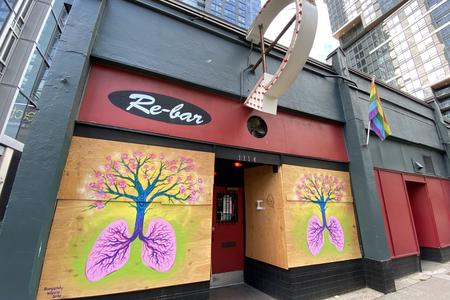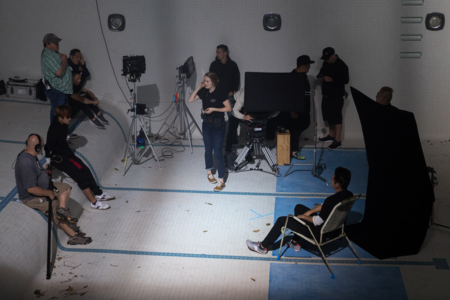“I don’t think we’re going to make that [movie] any time soon,” says West, known for her work on successful local feature films like Sadie and Lane 1974. “I don’t know if I want to expose people to a hospital, much less a 25-person crew.”
Across the state, film production is suspended in a freeze-frame for the foreseeable future. Washington’s film offices, along with national and local unions, are developing a pandemic-proof playbook for the industry. But, as yet, not much is sure, except that the new normal will include personal protective gear, disinfection of equipment, packaged food instead of craft catering tables and, likely, dedicated “safety officers.”
Hollywood wanted “fewer Asians” in a new kung fu film. This Seattle director stuck to his script
“The whole nature of the work that we do is full-on human contact,” says Doug du Mas, location manager and film union representative. “Social distancing guidelines will change the way movies are shot in almost every way imaginable,” he says. “It’s a whole new world.”
Promoting safe sets
“The photographer Robert Capa said it best: If your pictures aren’t any good, you need to get closer,” says Paul Mailman, a Seattle-based director of photography who often works on documentaries. “That’s not possible. I can’t get closer."
Obeying the new public health guidelines without making too many artistic trade-offs is just one of the challenges ahead, says Mailman, whose new documentary, South by Southwest 2019 jury award winner Diana Kennedy: Nothing Fancy, is currently streaming.
“Live action production is extremely difficult, if not impossible, to do while maintaining social distance,” he says. “Basically, we are inventing the wheel.”
For Seattle theaters, the show must go on. Here's how.
To figure out how to get rolling, many in the local film industry are keeping a close watch on how other places are approaching the puzzle. Mailman cites one notable example, the long-running Australian soap opera Neighbours. “They are going to crazy lengths. Actors have no hair and makeup done, they do it themselves,” he says. “The crew is divided into different pods in different spaces. If someone tests positive, that pod is eliminated as opposed to an entire production shutting down.”
Amy Lillard, executive director of Washington Filmworks, the state’s film office, says other ideas include adding more monitors so that cast and crew aren’t huddling around the same screen to watch a shot together, as well as ‘holding rooms’ for the actors who aren’t in the scene being shot. “Instead of everyone standing by on set,” she says, “only the people needed for that particular moment would be on set.”
That’s not the only thing that might change for actors. Much more casting might happen electronically, says Nike Imoru, a local casting director, film producer, investor and actor. “We’ll see more self-taped submissions and less contact in the room with directors and producers,” Imoru says. She adds that while a lot of early casting already happens through tapes, “chemistry tests,” to gauge how actors “ignite” with each other, are necessarily done in person.
“Unless they do it with masks and PPE, I couldn’t imagine doing that,” Imoru says, “or unions allowing that, or agents allowing their actors going through that. There's a lot of layering up that needs to be done for a process that is usually about stripping down and being vulnerable.”
Movers, shakers, thinkers, organizers: A new documentary gives voice to the women of Seattle’s Black Panther Party
Speaking of layering up, actors and directors will have fewer wardrobe options. “As costume designers, we are all hands-on,” says Ron Leamon, a Seattle-based costume designer for film and TV. “Between makeup and wardrobe, we are always touchy.
“So, do you send the clothes to the actors and have them try it on [at home]? At the same time, all those clothes have to be disinfected.”
The money pit
All of the above will require more time — which means more money. “We’re going to have to be on payroll earlier than we normally are,” Leamon says. “It’s going to take at least two hours to come in and make sure you’re healthy enough to work, take your temperature, make sure you have gloves and PPE, and all the procedures you have to go through.”
Kate Becker, former director of Seattle’s film office and now King County’s Creative Economy strategist, agrees: “Because of all the safety protocols involved and all the standards that have to be upheld, professional film production is likely to be even more expensive than it is now.”
Imoru posits another scenario: “Quarantining cast and crew for two weeks? There’s costs involved in that.”
Investors might not want to chance it. “Making movies is already a risk. A very strong risk,” says Imoru, who finances film production with business partner Rebecca Petriello of Rebel Kat Productions. What if the movie gets shut down? What if someone gets really sick, or dies, during production? What if someone sues the production for non-compliance with safety measures? These are always concerns, but now that risk is “exponentially greater,” Imoru says.
Insurers might be making similar calculations. “One of the other big issues the industry is facing: People will not insure production,” says Washington Filmworks’ Amy Lillard. “Even when we have safety protocols on set, and green light from the government — we have to have the coverage. Insurance companies are doing an evaluation of whether or not it makes business sense.”
One way to cut down on costs might be for the crew to take up multiple roles. Maybe a casting director moonlights as a production assistant, which could mean only one person has to quarantine for two weeks. Plus, a leaner crew could have the added benefit of getting greenlit sooner. “It’s very likely that it will be easier to do small productions first before we think about large productions later,” says Lillard.
On the plus side, indie productions are used to working with a small crew and cast already, says Bao Tran, writer and producer of kung fu comedy The Paper Tigers, currently in post-production. “That’s even preferable in normal days: it’s cheaper,” he says. “There will be some serious questions on how to do that for studio-level movies. It could be a first-world studio problem.”
But Tran clarifies that doesn’t mean indie film industry workers are safe: "It's affecting everyone," he says. The ecosystem is fragile, he explains: “If it bottoms out or the top gets blown off, everyone gets affected by that.”
Expect more Avengers, less art house
Location scout Doug du Mas believes the coronavirus will speed up film’s digital revolution: “You’re going to see a lot more digital stuff,” he says. “Look at the big features: Marvel, Avengers. They do almost all of that on greenscreens now. So much of that work you can control in the environment of a studio. Once you step out of that bubble of a stage or green screen, it becomes much more difficult.”
Northwest Film Forum Executive Director Vivian Hua agrees. Computer-based filmmaking (such as animation or post-production work) hasn’t been affected much by COVID-19, she says. “That industry will do really well in the new future,” she says. “Any sort of VR or super tech-heavy film stuff is going to do well,” she says.
Things may be most challenging for midlevel art house movies, says Beth Barrett, artistic director of the Seattle International Film Festival (which had to cancel its 46th annual edition this year). “Hollywood can use green screen, animate it all and bring back Will Smith. Indies can record on a phone. [But] midlevel, $5 million to $25 million art house titles, will be harder to produce in the next couple of years.”
Get the latest in local arts and culture
This weekly newsletter brings arts news and cultural events straight to your inbox.
Are film festivals fin?
Those midlevel art house titles have a symbiotic relationship with indie film festivals. But the coronavirus has forced many festivals — including Cannes — to pivot to online programming. Will filmmakers, who are now seeing movies big and small bypass theatrical releases in favor of streaming, still want to go the film festival route? (Especially given our new reluctance to sit together in large groups of strangers?)
“It’s controversial to say, [but] does a film festival matter?” asks Jennessa West. “I think it does, I like the atmosphere of it. But maybe there’s a better way, a way we haven’t thought of. Which is scary because that’s the model we know and understand for distributing indie films.”
West explains the typical film festival route: “You submit. If they like you, they pick you. They supply the press outlets and sales agents. You make your debut, and hopefully the press likes it so you can show a distributor. It’s all about getting firmer ground underneath you. It’s going to be interesting to see how filmmakers pivot, make up for that.”
Thin Skin, a Seattle-set movie by Ahamefule Oluo, Lindy West and Charles Mudede (based on Oluo’s off-Broadway jazz-memoir Now I’m Fine) was accepted to the Bentonville film festival in Arkansas, scheduled for this spring. But mere weeks later, the festival had to be postponed. Stuck at home, Thin Skin producer Jennessa West finds herself pondering, “Can we just take this directly to a distributor?” There might be a greater opportunity to get picked up. “[People] need content because everyone is sitting at home eating up Netflix,” she says.
Northwest Film Forum has already streamed multiple ticketed mini-festivals since the pandemic closed its physical Capitol Hill location — a format that will stick around beyond the coronavirus. “We’ll continue our online festivals into the near future and possibly longer,” Hua says. “Because our festivals are so targeted and niche, some of them do just as well or better as they did in person, and we have a wider reach and audience.”
Mammoth festival SIFF has also dipped its toes in the streaming water. Even though it might be hard to stream entire film festivals online due to piracy issues, says Barrett, it’s likely that more festivals will offer hybrid options in the future. “I know that Toronto and New York are looking at integrating online programs into their existing in-person programs,” she says, adding that SIFF is looking into similar year-round streaming options. “How do you add some sort of virtual programming into your year-round presence?” she posits. “Not just because of quarantine, but because of accessibility issues or, in Seattle, traffic issues.”
Mulan on seven screens
If you ask Barrett, there’s really not much question: movie theaters will endure. (SIFF operates three theaters year-round.) “Even though we've all been watching probably a lot more Netflix than is good for us,” she says, “we still want to go and sit in that dark room with the big screen.”
Most directors also prefer their movies to be seen on the big screen. Bao Tran of The Paper Tigers says the setting is central to the experience of seeing his forthcoming movie. “It's a very crowd-based type of film. It’s a crowd pleaser, you want a big audience so the audience can laugh together,” he says.
Plus, he says, as a film created by and starring mostly people of color, The Paper Tigers is the kind of film people want to support by literally showing up for it — as demonstrated by the box office success of films like Crazy Rich Asians, The Farewell and Black Panther.
Movie theaters will rebound, Tran says. The experience might just look different, with attendance capped and audience members sitting at a safe distance from each other. Or maybe they’ll get creative, he adds: “Drive-ins. What is old is new again.”
With fewer people allowed to crowd into theaters at the same time, one thing we can be sure of is longer movie runs, says SIFF’s Barrett. “Especially larger theaters like AMCs aren't going to be able to show the number of films,” she explains. “The summer is going to be [movies like] Mulan on seven screens, whereas it might have been on two.”
Tommy Swenson of The Beacon Cinema, a one-screen movie theater in Columbia City, says the future is impossible to predict at this point. “But cinema is at its best in a theater with other people around … even if we're all wearing masks and keeping further apart.”
A silver lining for the silver screen
The film industry in Washington had its challenges before COVID-19 hit, says Peter Barnes, co-founder and CEO of local media production company Clatter&Din. “We’re not a serious player in the high-budget commercial world,” he says, with tough love. “I call this the no-budget world. We’re heavily tilted toward independent film projects that have no budget. That's because of the lack of a decent film incentive.”
Washington’s film tax incentive, a type of funding assistance capped at $3.5 million a year and set to sunset in 2027, is one of the lowest in the country, with states like Oregon capping its rebates at $14 million a year and major film centers like California, New York and New Mexico at $330 million, $395 million and $110 million, respectively.
What’s been considered a competitive disadvantage by many in the film world, Barnes says, could perhaps become a silver lining after the coronavirus guts the economy. “What happens to Washington if the big players in the incentive world — if their incentives get drastically cut due to COVID-19 economic conditions?” he asks. “All of a sudden it’s an even playing field for Washington. Our paltry $3.5 million may be so small that it doesn’t get cut.”
The coronavirus shutdowns come at an inopportune time for Washington’s and Seattle’s film industry. A new film task force, a reorganization of the city’s film office and a new strategy at county level had just taken first steps when COVID-19 hit. But Barnes wonders if maybe it was the shake-up everyone needed. “I feel that the community is engaged and more proactive than we've been in a long time,” he says.
Another potential benefit of the reset could be having the time to reflect on long-established inequities. “If we choose it, it’s an opportunity to slow down and see what’s not working and plan to have better systems,” says Northwest Film Forum's Hua. “The film industry has been struggling with equity and diversity forever. What are the plans we can put into place instead of being ‘go go go production?’ ”
The COVID-19 shutdown has brought a key aspect of filmmaking — and so many artistic careers — into tight focus. “The social safety net for gig workers hasn’t worked. That’s something that needs to be addressed,” says Washington Filmworks’ Lillard. “If you are looking for the glass half full, this time gives us the opportunity to reinvent things.”

